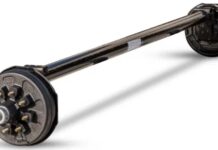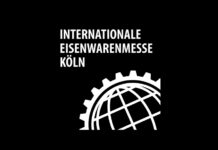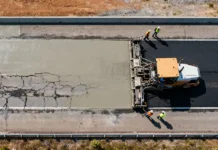Construction professionals recognize the importance of protecting their equipment, particularly for heavier machinery that can automate hazardous tasks and enhance worker safety.
While it is essential, protecting outdoor equipment like excavators, backhoes and other moving vehicles can be challenging since elements, like extreme temperatures, sunlight and moisture, are difficult to control.
These seven strategies can help companies proactively protect their machinery.
1. Add Protective Covers and Shelters
Outdoor construction equipment is vulnerable to rain, snowfall and UV rays. Some extra coverage can help protect the machinery from such elements. Place covers on when equipment is not in use to ensure that it stays in prime condition.
There are numerous options when it comes to protective covers. However, it is essential to have features like weatherproofing and UV resistance. Vinyl tarps are an excellent choice since their material is durable enough to withstand outdoor elements. It is important to obtain large enough sheets, especially for larger construction machinery. Companies can obtain a custom tarp to fit their specific size requirements.
Another temporary option would be pop-up work tents. Aside from protecting the equipment, these tents allow workers to take cover from adverse weather conditions. Work tents should be easy to assemble within temporary work zones. Portable ones are beneficial since they can be used throughout multiple projects.
Construction teams should also have dedicated storage. A permanent space to house equipment provides long-term storage and protection. These kinds of shelters should have limited access and strict security measures. Theft and tampering can compromise company reputations and lead to increased downtime and costs. Consider installing physical barriers, such as fences and locks, to enhance security. Ensure that the keys are given to trusted personnel to minimize the risk of internal theft.
2. Apply Anti-Corrosion Coatings
Most construction equipment is made of metal, ensuring it meets industrial standards. However, outdoor elements can still weaken its material properties and cause rust over time. It is a natural occurrence, especially when dealing with rain and moisture. To prolong equipment lifespan, it is essential to apply anti-corrosion treatments.
Anti-corrosion treatments can take many forms, ranging from paints and spray-ons to epoxies and polyurethane. Analyze what would work best for the type of equipment being coated. For instance, a standard anti-rust paint might be sufficient for stationary equipment with minimal exposure to wear and tear.
In contrast, a two-part epoxy coating would offer a more robust, abrasion-resistant layer for high-contact areas like excavator buckets or dump truck beds. For parts constantly exposed to direct sunlight, a polyurethane finish can provide superior UV protection, preventing the coating itself from degrading over time.
To apply treatments properly, remove dirt, dust, debris and other contaminants that can inhibit the anti-corrosion coating from laying on evenly. Pressure washing is often sufficient, but some teams go a step further, using compressed air and vacuuming to remove any residue from the surface.
Once dry, it is time to apply the coating. In cases of inclement weather or extreme temperatures, put coverage on top of the equipment or reschedule the application. High temperatures can cause the layers to dry too quickly, while low temperatures can prolong the curing process. Follow the manufacturer’s instructions for application. Ensure uniformity and thick coverage and add a protective finish for durability.
3. Monitor the Moisture Levels
In addition to causing rust, moisture can weaken the construction equipments’ electrical components, leading to short circuits and electrical shocks. There is also the chance of mold developing.
Mold essentially clings to dust and debris on the equipment. It can induce coughing or wheezing, as well as burning eyes and skin rashes. It is essential to steer clear of these risks to prioritize worker health and safety. Pay attention to areas and equipment exposed to moisture. Porous materials, such as wood, are vulnerable, especially when they come into direct contact with water.
Jobsites in humid environments need to pay extra attention to prevent rust, electrical damage and mold formation. Practice quick daily checks for any potential damage during such conditions. When the machinery is stored away, consider using moisture-preventing solutions, such as dehumidifiers and silica gel packs. Construction teams can also invest in elevated storage and drainage solutions that keep equipment dry in the event of light flooding.
4. Rotate Seasonal Equipment
Construction teams need to plan how outdoor construction equipment will be rotated according to the seasons. Professionals should prepare the machinery they will not use for off-season storage and get the equipment they will use ready for the upcoming season.
For example, as winter weather approaches, use less fuel-dependent units when possible. If fuel is required, keep the tanks less than half full to reduce the risk of freezing.
Professionals should appropriately winterize the construction equipment that they will use. For instance, they should allow the machinery to preheat itself by preemptively turning it on. Attachments, such as snow plows and tire chains, can help ensure the equipment can navigate icy surfaces on-site.
Use deicing agents to melt away any buildup. Space out the deployment of these equipment pieces as well to prevent further exposure to the harsh winter conditions.
Place off-season equipment in storage. Consider insulating and adding heaters or coolers to maintain an optimal temperature. Record when equipment is stored in the inventory to keep track of equipment rotations moving forward.
5. Schedule Routine Maintenance
Routine inspections can ensure that outdoor equipment meets the highest standards in terms of quality and performance. Regular inspections also help detect and mitigate dangerous failures early on, reducing costs and unexpected downtime. It is especially valuable during seasonal shifts since outdoor weather and temperature changes often impact equipment.
Check frequently for obvious signs like rust, cracks and dents on metal fixtures. For a more thorough examination, test the controls and safety mechanisms and check more hidden aspects like the fluid levels. While some companies perform maintenance annually or quarterly, monthly checks and fine-tuning allow for earlier intervention.
Professionals can also build an equipment maintenance calendar. Begin by creating an inventory of all the outdoor equipment used and recording its frequency of use. Take note of any available manufacturer recommendations about how often to tune up the equipment.
Those insights should help in narrowing down when it is best to conduct routine maintenance. Keep a log of when equipment undergoes inspection and maintenance to track when the next session is due. This log can also serve as a good point of reference to determine if the machinery tends to break down frequently and whether a replacement is necessary.
6. Orient Staff on Equipment Handling
Staff training is a critical component of prolonging equipment life, as workers are responsible for handling these items. Brief them about what outdoor elements they should be wary of and how to protect the equipment. Giving them information about essentials like performing proper maintenance and rotating equipment use can make a significant difference in operational efficiency and productivity.
Even basic information about each machine’s use and its overall limitations can prevent misuse or damage in the long run. Welcome questions at these training sessions to get everyone on the same page about providing the best level of protection for outdoor construction equipment.
Foster a work culture of accountability by encouraging transparency when equipment is used or cleaned. Ask workers to report any defects they find within the machinery. Whether or not the errors stem from their own actions, it is vital to treat these as learning opportunities to improve machinery use and care.
7. Leverage Technology for Asset Management
Modern technology has improved equipment and its hardware. However, there are several other installations, such as security cameras and motion-detector lighting, that can enhance control over a construction site. Software integration is also key to achieving effective asset management.
Utilize digital asset management programs to help keep track of equipment inventory. Additional features, such as sensors, can provide real-time information on the location of specific machinery. That data will be invaluable if machinery is moved without authorization or tampered with.
It is also wise to initiate virtual communication among construction workers. Staff should say when they deploy or return equipment to reduce miscommunications, which can result in accidents and increased downtime.
Explore other effective tech solutions, such as enabling predictive maintenance alerts. These alerts allow teams to identify potential failures before they occur and proactively improve equipment, thereby preventing downtime.
Consider leveraging technology to keep track of outdoor elements as well. For instance, a weather monitoring system can provide information about outside conditions and weather, helping construction managers act accordingly.
A biometrics system for access control can also deter external intruders. Additionally, since it utilizes unique physical traits, the team will maintain a record of who has used specific pieces of equipment.
Keep Equipment Pristine Despite Outdoor Elements
Protecting outdoor construction equipment is crucial to safeguard investments and maintain a company’s productivity levels. Be mindful of the elements most likely to damage equipment and implement the right protective strategies.
A multi-layered approach that combines physical protection, diligent maintenance and comprehensive staffing training is the most effective defense. These proactive efforts will ensure machinery remains in optimal condition, extending its lifespan and maximizing its return on investment.
































